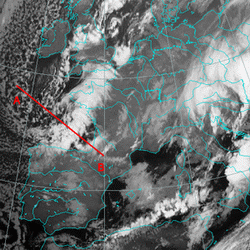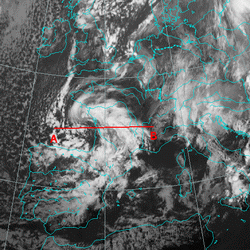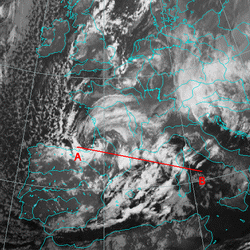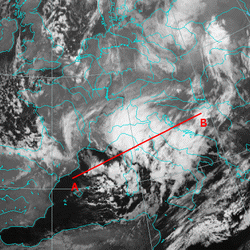Vertical Cross Sections
In previous chapters the diagnosis of cyclogenesis was made by help of satellite images and numerical parameter fields on certain pressure levels. To gain better insight in the vertical structure of the cyclone and the vertical distribution of the relevant parameters, the use of cross sections can be helpful.
Vertical Cross Sections (VCS) trough the cyclone
In the next chapter several numerical parameters in the vertical cross sections are discussed for the development phases of the cyclone.

|
27 February 2004: 00 UTC |

|
27 February 2004: 12 UTC |

|
27 February 2004: 18 UTC |

|
28 February 2004: 00 UTC |

|
28 February 2004: 06 UTC |
Summary of the investigations in this chapter
Use of the vertical cross sections enables the insight into the vertical structure of the atmosphere during the process of cyclogenesis. What could be seen in horizontal distribution of the PV=1 unit height is even more clear and better understood from the vertical cross-section. Potential Vorticity anomaly is well defined in the case of the first cyclogenesis both in the upper levels and near the ground. Then it follows the cyclone on its path towards the Mediterranean and in the transition stage twofold structure is well defined. After that the anomaly is connected to the newly developed cyclone.
Change of the vorticity advection with height was very favourable for the upward motion. In the transition stage it could be clearly seen that there are two maxima of PVA in the lower layers confirming that there are two systems - one dissipating and a new one developing.
Temperature advection distribution is in all stages very typical for the cyclone. Warm advection within the cloud band and in the upper levels and cold behind and beneath strengthen the cyclonic development.